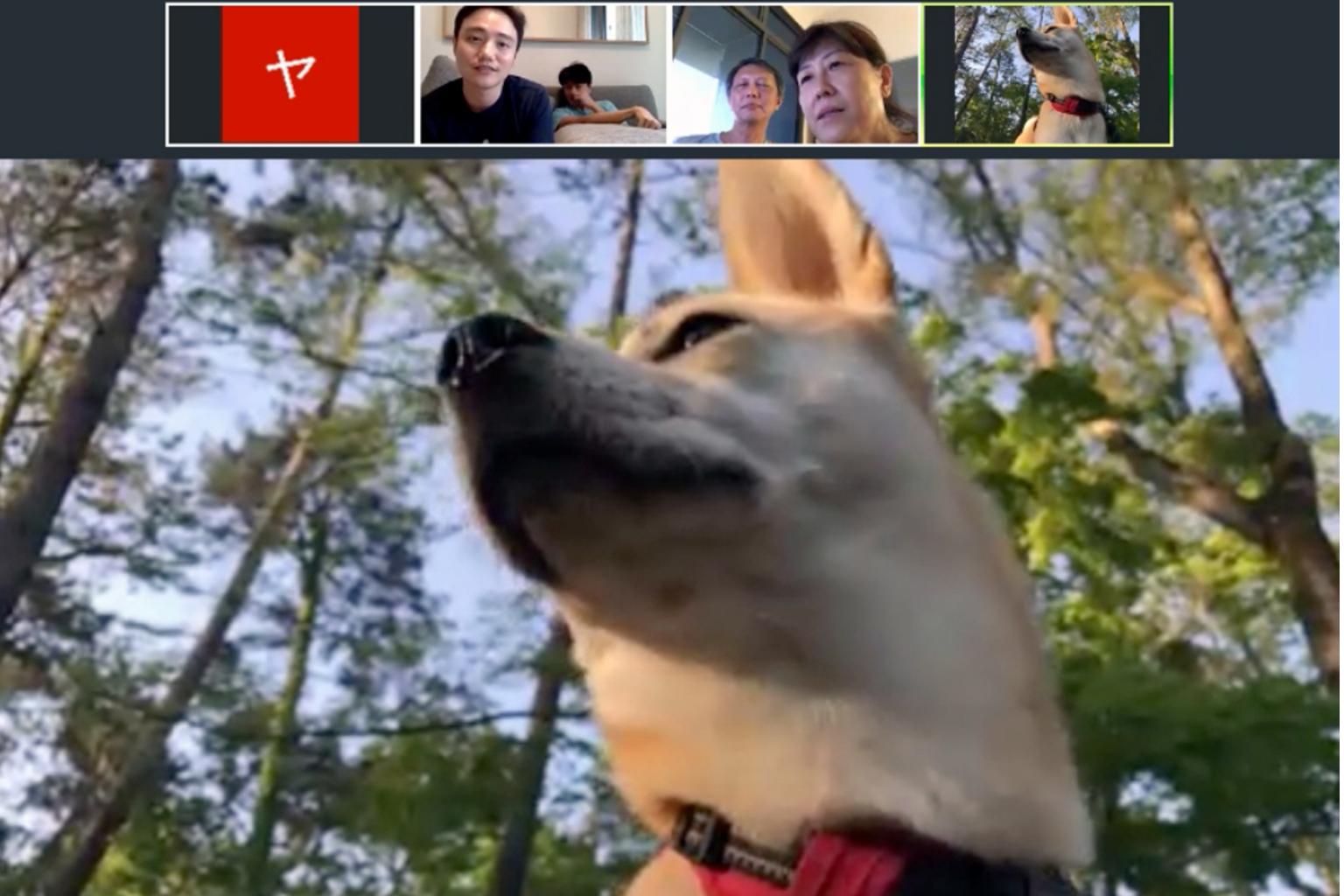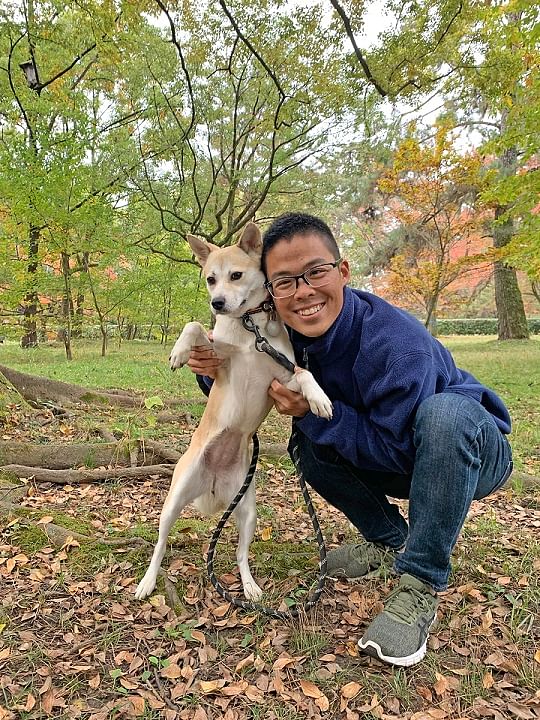Virtual tour: Flower hunting in Kyoto with Mori the forest dog
Sign up now: Get ST's newsletters delivered to your inbox

Singaporean Lee Xian Jie guides the tour with his pet Mori, a "wild dog" born in a forest.
PHOTO: LEE XIAN JIE
Follow topic:
KYOTO - A globetrotter buddy pings me on WhatsApp one Sunday afternoon at 2.50pm. "Hey, my friend has a virtual Kyoto flower tour at 3pm," she says. "Somebody pulled out last minute. You interested?"
And so, 10 minutes later, a Zoom link on my iPad teleports me to the gardens of the Kyoto Imperial Palace on a sparkling late-spring day in May - no boarding pass required, or much planning either.
On-screen, I notice one companion is sipping matcha, while another dons a floppy hat to get into the spirit of travel. Just in time, I pop a slice of Japanese cheesecake next to me.
Our one-hour online escapade is "Flower Hunting In Kyoto With Mori The Doggo". With a name like that, I know it will be a niche experience of Kyoto - whimsically unlike the other times I wandered alone in the more touristy, whispery Arashiyama bamboo forest, Gion geisha district and Philosopher's Path, that made me think about my place in the passage of time.
Our guide is Singaporean Lee Xian Jie, 30, who has lived in Japan for nine years since his Waseda University days in Tokyo. He introduces his pet Mori, a "wild dog" born in a forest.
Mori soon chomps the dandelions dotting the palace's Kyoto Gyoen National Garden. She had worms when she was adopted from a shelter last year at age three, and instinctively knows dandelions quell stomachaches, he reckons.
"These days, I guess it's just because the dandelion flowers are sweet. They taste like chrysanthemum flowers, just less bitter," says Mr Lee, a partner in Craft Tabby (https://crafttabby.com/), which runs walking and cycling tours of Kyoto's hidden sights.
Mori also loves eating the wild orchids sprouting at the palace. She even has her own GoPro camera, so virtual tourists can experience the garden from her (hyper) perspective.
Now that the Kyoto city government is trying to get businesses to adapt to the pandemic, Mr Lee applied for its funds to pay for the GoPro camera, a smartphone stabiliser and botanical reference books.

More flora is discovered, including Japanese buttercups and white clover, a "bubble wrap of the Meiji period".
The satozakura cherry has an astringent taste, Mr Lee says. The leaf has a preservative quality and is used to wrap rice cakes or sakura mochi.
Then he holds up a bright red berry and asks: "What does it look like?" In tune with the times, we all reply that it is a coronavirus lookalike.
It is the hebi-ichigo or snake's strawberry, which grows in forested areas where snakes may slither around. In rural Japan, the red fruit is bottled in shochu.
And so he deftly conjures up a garden of curiosities that reveals Kyoto afresh to us, a half-dozen Japan enthusiasts.
The tour ends at the Some-i well, which is said to be more than 1,000 years old. Its soft water can be sipped or used as a first wash for rice. Mori gets her drink too.
It is a fun hour with an expressive Kyoto insider and a cool canine. It is so immersive that, for fleeting moments, I wonder if I will get motion sickness from Zooming around.
But it is appealing and my Singaporean globetrotter buddy even got her husband to sign up for the same tour later and invite his overseas family, so everyone enjoyed a virtual holiday across continents.
Mr Lee has hosted 80-plus flower-hunting participants from April to last month. It will restart in the colourful autumn and the cost will be 1,000 yen (S$13) per person.
This is an intimate journey redolent of the trips I miss, so I am now curious about his new online tour: Forest Bathe In Kyoto's Sacred Mountain.

